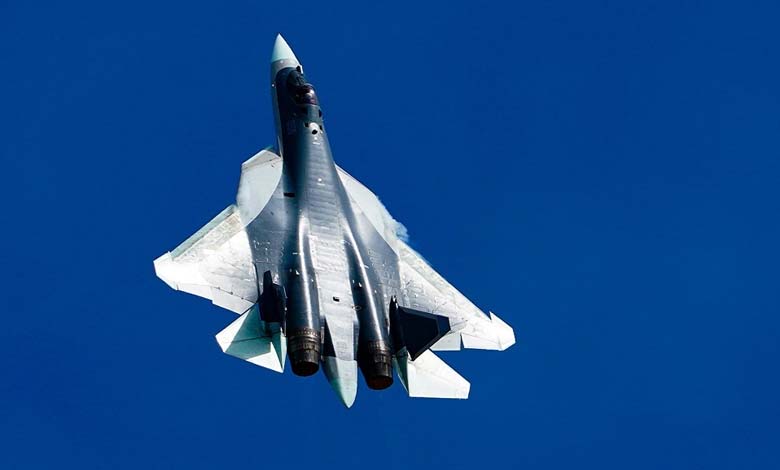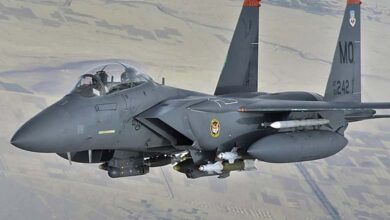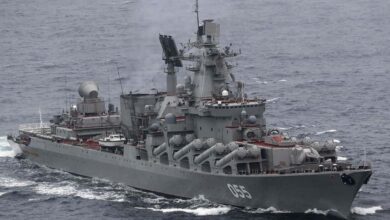Su-57 and Zircon: A Game-Changing Equation in Russia’s Strategic Deterrence

In a development that redefines global deterrence dynamics, Russia’s Ministry of Defense has officially confirmed the integration of advanced hypersonic missiles into its fleet of Su-57 stealth fighters. This step is part of an accelerated rearmament program for the Russian Aerospace Forces.
-
Chinese J-10C vs. Russian MiG-29M: Which Fighter Jet Is Best for Egypt?
-
20 Minutes and a Weapon Hidden in a Shoe… the Story of the First Plane Hijacking in History
The prospect of arming the Su-57 with hypersonic missiles has long attracted significant attention, especially after Russian news agency TASS revealed in February 2023 the development of a compact air-to-ground missile with hypersonic capabilities that had reached the prototype stage, according to Military Watch magazine.
It is widely believed that this missile is an airborne variant of the Zircon missile, which entered service aboard Russian naval vessels in January 2023, and was later integrated into attack submarines. Moscow is now working to deploy it from land-based platforms as well.
-
Air Force Two: Discover the Plane of America’s Second-in-Command
-
Iran intercepts U.S. spy plane amid continued state of maximum alert
The Zircon boasts speeds exceeding Mach 9 and a range of up to 1,000 kilometers, while being capable of penetrating all current and future air defense systems, according to former Defense Minister Sergey Shoigu. Its immense destructive power upon impact—thanks to its high velocity—is sufficient to disable even large warships.
By contrast, the most advanced American anti-ship missile, the SM-6, has a range of only about 450 kilometers and a top speed of Mach 3.5, highlighting a significant performance gap between the systems.
-
The Mystery of the American Military Plane… An Unfinished Secret Mission 63 Years Ago
-
A Mysterious Mission… A U.S. Spy Plane Over Cartel Territory
A Unique Fusion of Stealth and Hypersonic Strike
The combination of the Zircon missile with the Su-57—an aircraft equipped with stealth capabilities and long-range operational reach—offers Russia a strategic edge, enabling it to strike enemy fleets from safe distances and at speeds that are extremely difficult to detect or intercept.
With plans to expand the Su-57 fleet to several hundred units by the end of the decade, this integrated system emerges as a highly dynamic and effective maritime deterrent.
-
Unidentified Ballistic Missile: North Korea Launches New Missile Toward the Sea of Japan
-
Intercontinental Missile Warfare: Russia Launches a Ballistic Missile at Ukraine
Long-Range Cruise Missiles in Compact Form
Zircon is not the only new missile in the Su-57’s arsenal. In October 2023, Russian media reported the development of a cruise missile derived from the KH-101/102—typically used by strategic bombers—specifically tailored for the Su-57.
Despite its smaller size, this missile retains an impressive range of up to 3,500 kilometers, giving the Su-57 the longest engagement range in its class worldwide. This advancement is attributed to foldable wing design, efficient internal layout, and the use of a compact, high-performance turbofan engine, though detailed information about the program remains limited.
-
Launching of two ballistic missiles towards an American destroyer in the Gulf of Aden… Will the “Ship War” ignite?
-
Saudi Arabia has successfully interrupted 526 drones and 346 ballistic missiles
Toward Wider Deployment and Export Potential
Although currently deployed within a single operational unit, there is growing likelihood that the hypersonic missiles developed for the Su-57 will be adapted for use on other aircraft in the Russian fleet. This is already evident in the deployment of the advanced R-77M air-to-air missile—originally designed for the Su-57—now integrated into Su-35S fighters.
Expanding the compatibility of these weapons across multiple platforms also enhances their export potential, especially amid a global race for air and naval superiority technologies.
In the same context, the MiG-31K/1 emerges as a potential launch platform for the airborne version of Zircon, following its previous use with the Kh-47M2 Kinzhal ballistic missile. Given Zircon’s smaller size compared to the Kinzhal, the MiG-31 could potentially carry multiple missiles per sortie, significantly amplifying its strike capabilities.
-
The Arab Coalition has intercepted and destroyed many ballistic missiles and explosives-laden drones targeting Saudi Arabia
-
Nuclear War Message: The Soviet Dead Hand Confronts America’s Doomsday Missile












